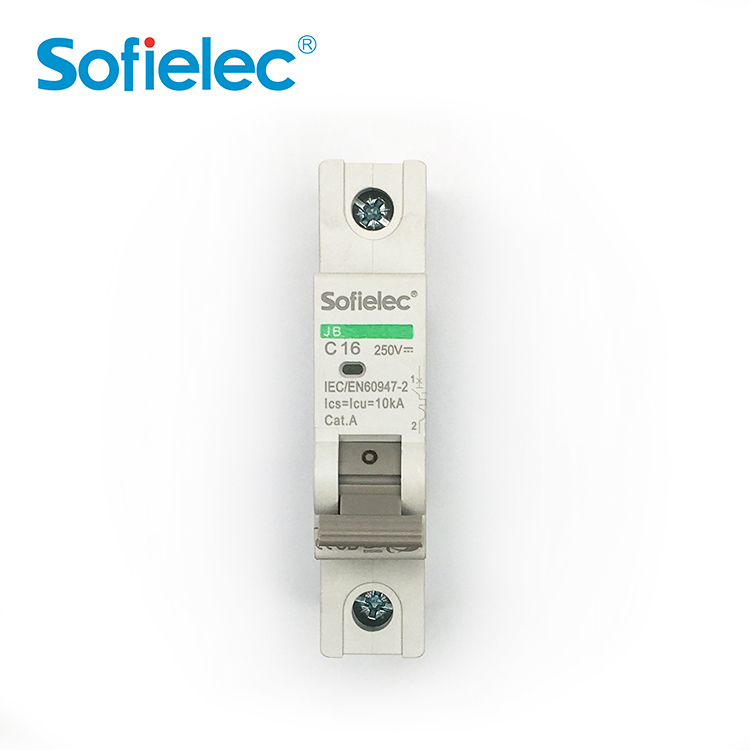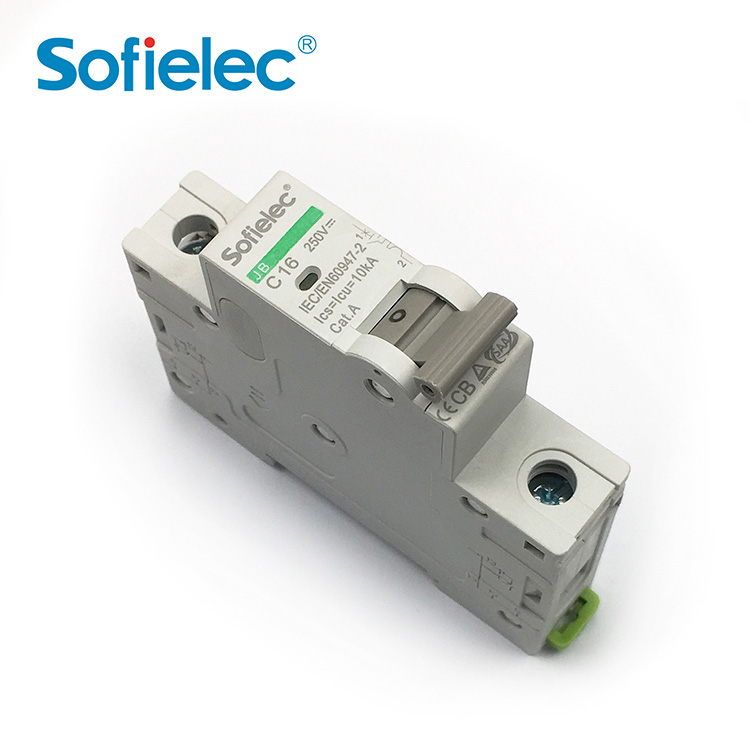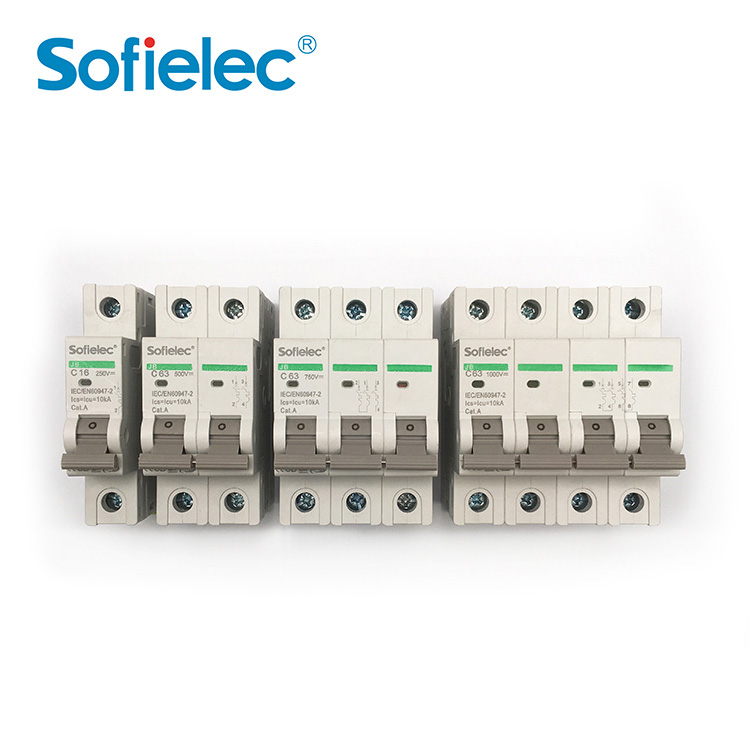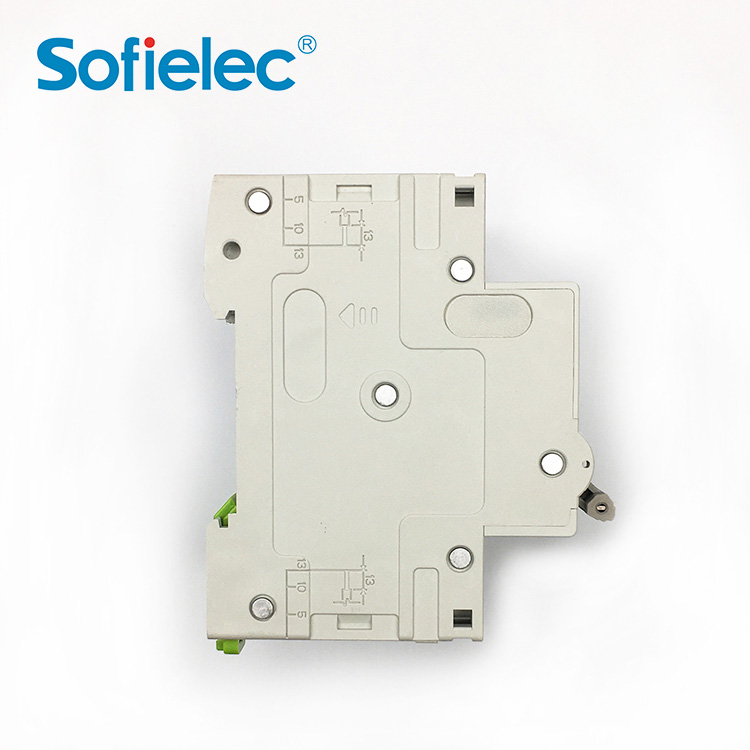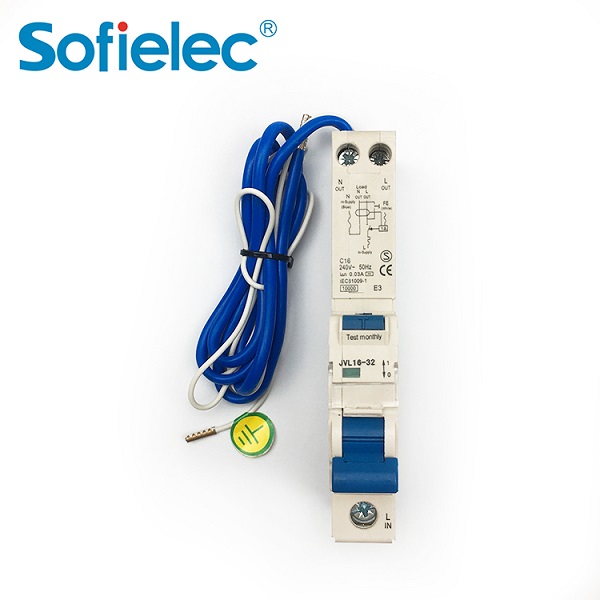| Categories | DC Series |
| Model | JB Type |
| Rated insulation voltage | 1000V DC |
| Breaking capacity | 10kA |
| Impluse voltage | 4kV |
| Electrical connection | By the bottom for In and Out |
| Number of poles | 1P 2P 3P 4P |
| Rated service breaking capacity | 100 % of the Icu |
| Mechanical | 20,000 cycles |
| Degree of pollution | 2 |
| Category | A (no delay in accordance with IEC / EN 60947-2 st |
| Tropicalisation | Relative humidity: 95 % at 55°C in accordance with |
| Terms of Payment | L/C, Western Union, MoneyGram, T/T, Paypal |
Construction and Feature
The JB is a DC circuit breaker dedicated to multi string photovoltaic installations. This circuit breaker is designed to protect the cables located between each string of photovoltaic modules and the photovoltaic inverter against overloads and short circuits (see application diagram).
Combined with a switch , the JB will be installed in a string PV protection enclosure at the end of each string of photovoltaic modules.
It can be locked (by a padlocking device) in OFF position as a safety measure for removal of the PV inverter.
Since a fault current can flow in the reverse direction to the operating current, the JB can detect and protect against any bidirectional current.
To ensure the safety of the installation, it is necessary, depending on the various types of application, to combine the JB with:
■ a residual current device at the AC end,
■ a fault passage detector (insulation monitoring device) at the DC end
■ an earth protection circuit breaker at the DC end
In all cases, fast action on site will be required to clear the fault (protection not ensured in the event of a double fault).
JB is not polanity sensitive: (+) and (-) wires can inversed without any risk.
The JB is: delivered with three inter-pole barrier to provide increased isolation distance between two adjacent connectors.
Meaning and classification models
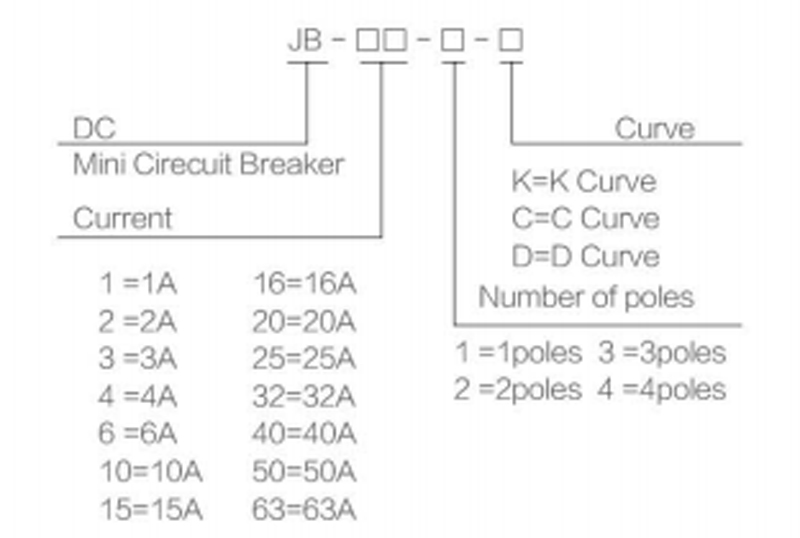
Main characteristics
| Operating voltage (Ue) |
1P=250V DC,2P=500V DC 3P=750 V DC, 4P=1000V DC |
| Rated insulation voltage(Ui) | 1 ,000V DC |
| Breaking capacity (Icu) | 10kA |
| Impulse voltage (Uimp) | 4kV |
| Electrical connection | By the botom for In and Out |
| Number of poles | 1P, 2P, 3P, 4P |
| Standards |
IEC 60947-2 EN 60947-2 |
Characteristic Curve
■ Position contact indication - suitabilty for isolation according to IEC/EN 60947-2 standard.
■ The presence of the green strip guarantees physical opening of the contacts and allows operations to be performed on the downstream circuit in complete safety.
■ Increased product service life thanks to fast closing independent of the speed of actuation of the toggle.
■Pre -wired product: Input / Output on the same side.
Power Coumption
| Rated service breaking capacity (lcs) | 100% of the lcu | |
| Endurance(O-C) | Electrical | 1,500 cycles(whern L/R=2 ms) |
| Mechanical | 20,000 cycles | |
| Mechanical | 20,000 cycles | |
| Degreen of pollution | 2 | |
| Category | A (no delay in accordance with IEC1 EN 60947-2 standards) | |
|
Degree of protection Device in modular (IEC 60529) enclosure |
IP40 | |
| Tropicalisation | Relative humidity: 95 % at 55C in accordance with IEC 60068-2 and GB 14048.2 standards | |
| Temperature | Operating | -25℃ to70 ℃ |
| Storage | -40℃ to 85℃ | |

> What are the four types of timer switches?
A time switch, often simply referred to as a timer, is a device that automatically controls when an electrical circuit is turned on or off. It's like a programmable ...
> Can You Replace a 10 Amp Breaker with a 20 Amp Breaker?
Replacing a 10-amp circuit breaker with a 20-amp one without a thorough professional evaluation is extremely dangerous and poses a significant fire hazard. Let's ana...
> What Makes a Circuit Breaker Essential for Home Electrical Safety?
Home electrical safety ranks high on every homeowner’s priority list, yet many overlook the quiet workhorse that prevents crises before they start. This device acts ...
> What Scenarios Require the Use of a Residual Current Circuit Breaker?
Electrical safety is a top priority in daily life and work, yet many people are unsure when to use a device that guards against electric shock. This article explains...

